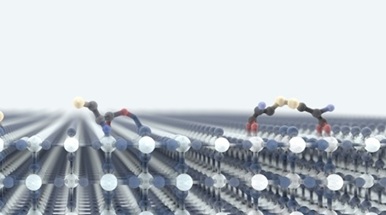
Until now, it was believed that cysteine, one of the basic amino acids in proteins, bonded to surfaces mainly through its carboxylic group. A team at DESY NanoLab (Germany), led by Heshmat Noei in collaboration with Cristiana Di Valentin’s group (University of Milano-Bicocca), has now discovered that the molecule actually uses all three of its “chemical arms” − amine, carboxylic, and thiol − to adhere to oxide surfaces, particularly titanium dioxide (TiO2).
Cysteine behaves like a tiny gear that fits perfectly onto the surface, with each functional group binding to a specific site. To demonstrate this, the researchers combined advanced surface characterization techniques with quantum simulations performed at the University of Milano-Bicocca, achieving an atomically detailed picture of the process.
The results of the research has been published in The Journal of the American Chemical Society (Wiley, Impact Factor 15.7, 2024 Journal Impact Factor, Journal Citation Reports (Clarivate Analytics, 2025)) in the paper entitled "Unraveling the Role of the Multifunctional Groups in the Adsorption of L-Cysteine on Rutile TiO2(110)" (DOI: 10.1021/jacs.5c07119).
“We have shown that the thiol and even the amine groups bind directly to the surface, revealing a much more complex adhesion mechanism,” explains Heshmat Noei. Cristiana Di Valentin adds: “All functional groups take part in the process, each at a specific site, like in a molecular puzzle.”
According to Daniele Perilli, “for the first time, it has been observed that cysteine can also form dimers that anchor to the surface.”
This is more than a chemical curiosity. Understanding how amino acids attach to materials is key to designing new technologies that interact with the body or the environment. Potential applications range from smart biosensors (for example, more accurate medical tests) and biomedical coatings that communicate with tissues, to water purification or disinfection systems, self-cleaning surfaces, and more efficient catalysts.